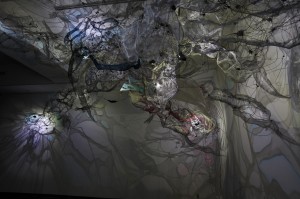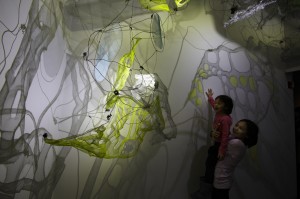grant applications all over the fine art world due dec 15
What do you hope to get out of this program?
I am applying to X at this time because I am ready now to bring the work I have been diligently and rapidly developing for three years to its mature formal state of woven monumental illuminated sculpture. I have questions about viewer response that will shape this work going forward. While I have enjoyed many fine opportunities in this same period of time to expose the work to the public, no exposure is so valuable as the formal critique, and reflection in a community of dedicated professionals in myriad roles in the arts.
Critical commentary, rigorous and thoughtful guidance, and the exchange between other artists and arts professionals teaches me. I hope to get the opportunity to be part of this formal critique program in this rich and exciting arts community. I look forward to hearing and seeing how my work processes in the minds of these ardent viewers. I look forward to hearing how they talk about it, and their recommendations. I also look forward to seeing others’ works, to listening and understanding them, both to build community, and also in service to my own work. Not every phase of studio development is right for this type of conscientious, demanding critical exposure. This is the right moment in the development of my work, and after three years of intense investigation, I also feel prepared to reflect usefully and creatively with my peers.
What do you aim to work on, complete and show?
I aim to work on and complete a monumental, installed illuminated sculpture that, informed by the critiques, is a puzzling and uplifting delight to negotiate and discover. I would like the sculpture to intervene on the building in surprising ways using light and shadow.
Over the course of the critique program, I would present the work in the stages of its progress. Early, I would seek feedback about the woven skeleton and its relationship with the body of the viewer. I would seek early feedback about the viewer’s tolerances negotiating alternative spaces. I would ask questions about the materiality of the work. How are aspects like color and materials, fabric, mylar, screen, and plastic, received by the viewer? After more weeks, I would seek feedback about the kinetic aspects, which can be quite impactful, including seasickness. Also in this partly finished state I look forward to listening to response on the use of colored light. Finally the finished piece, if it is successful, will question the critique on being an activity, an optical playground, as well as being an object. I intend to employ multimedia ways of broadcasting about the work, creating a narrative about it that can be experienced separately from the object in writing and social media. I will present these aspects of the work and offer them for critique, as well.
Describe a work of art you created that you feel was successful.
I feel that my January 2014 installation for show at nice place to exhibit was successful in a number of ways about the work itself, and also about its presentation. In this first time public use of interactive, responsive digital technology, I installed a wave-on aspect where a brilliant surprising shadow appeared for a few seconds when the viewer waved in a certain enticing area of the shadow that was enhanced with color on the wall. Many discovered the switch and spent time playing.
In order to achieve the monumental architectural impact I desired, while still allowing comfortable audience space, I drew attention to the unusually tall 26’ overhead space with colored, moving lights on the ceiling. I also kept the material body of the work mostly above the human space. On the walls, I configured shadows and light for a depth and surface illusion that grew in complexity until it confounded the seeming termination point of the ceiling. The object threw only shadows into the narrow human space, giving the appearance of walking through a matrix with almost no actual material impediment.
I used glass optics and scrim for the first time, which opened new doors for future design for light in space. Finally, curator C reported to me that of nine artists exhibiting with technology, mine was the only one that did not break over the three-month course of the show, which is surely a testament either to its success or to my lucky stars.

